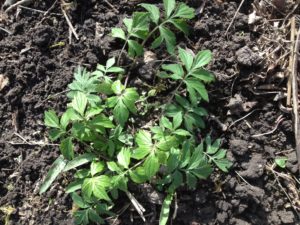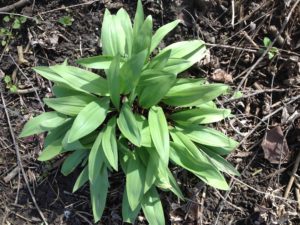
Simply put, I think there are hidden treasures in the natural world just waiting to be found. And I don’t use the term symbolically- I think there are many things often overlooked that should literally be treasured.
This time of year in central Wisconsin, much of our vegetation is again growing – emerging from the earth or from months-dormant- stems. Early spring wildflowers, the spring ephemerals, jump to life again so that they can harvest the sunlight before being drowned in the shade of taller plants. They are speedsters of the botanical world, emerging sometimes flower first so that their blooms grab the spotlight, so to speak, and the attention of the early pollinating insects. In just a few weeks they bloom, grow leaves, set seed, and go back to sleep. That they can accomplish all this in such a short time must reflect amazing efficiency, and I wonder what we can learn from them.
Many of our forests have been invaded by a whole host of exotic plants, which are in the process of becoming naturalized. They overwhelm our landscapes, especially at first glance. But often there are native plants buried beneath the invasive mass, which sometimes begin growing a little earlier than some of the invasives.

In one woodlot recently, among the dame’s rocket, garlic mustard, and reed-canary grass there were trout lilies, wood violets, Virginia waterleaf, wild leeks, toothwort, and more. In a few weeks, the invasives will quickly grow and dominate the forest floor, leading one to believe that they are the only plants present. Despite the invasion, the natives stubbornly hang on. One may think of the botanical world as a benign collection of plants happily coexisting, but in truth the competition is fierce and ruthless. In order to survive and reproduce, plants crowd, out-climb, shade, and poison each other if they can. If the defenses of one match the offenses of another, they in time find ways to co-exist. That they compete doesn’t make them any less wonderful- one has to admire the many survival strategies that have evolved over time.
People have introduced the invasive plants, and will continue to do so. Even though those invasives will become part of the “normal” flora of a region in time, I think it’s worthwhile to make sure the natives have a chance. I like to encourage at least small patches of sanctuary for native plants, first removing the non-natives, and then moving natives from areas on my property where they are struggling.
Plants, such as the ones mentioned above, can be carefully transplanted this time of year. Many natives can also be purchased from local nurseries. Some natives make excellent groundcover for shady places where grass and other plants don’t like to grow- plants like waterleaf, Canada anemone, and wild ginger for example. Jack-in-the- pulpit, columbine, Solomon’s seal, and even trilliums can be purchased and grown in wildflower beds. Please, never remove wildflowers from preserves like State parks, forests, or State Natural Areas like Woodland Dunes, or from private property without permission. There are fortunately enough vendors of native plants now that they are easily obtained either locally or by mail.
Many of us have a shady patch under our trees and shrubs where lawn plants just won’t grow. This spring, consider taking that patch and creating a place where these hidden treasures can prosper.
